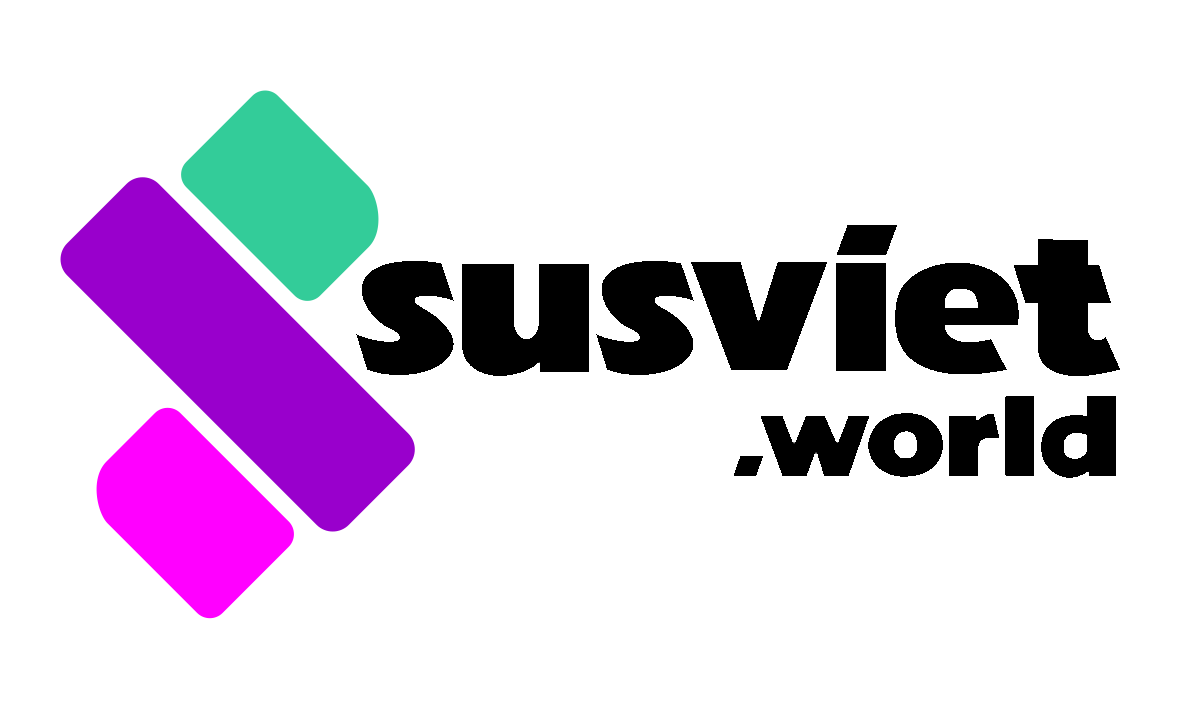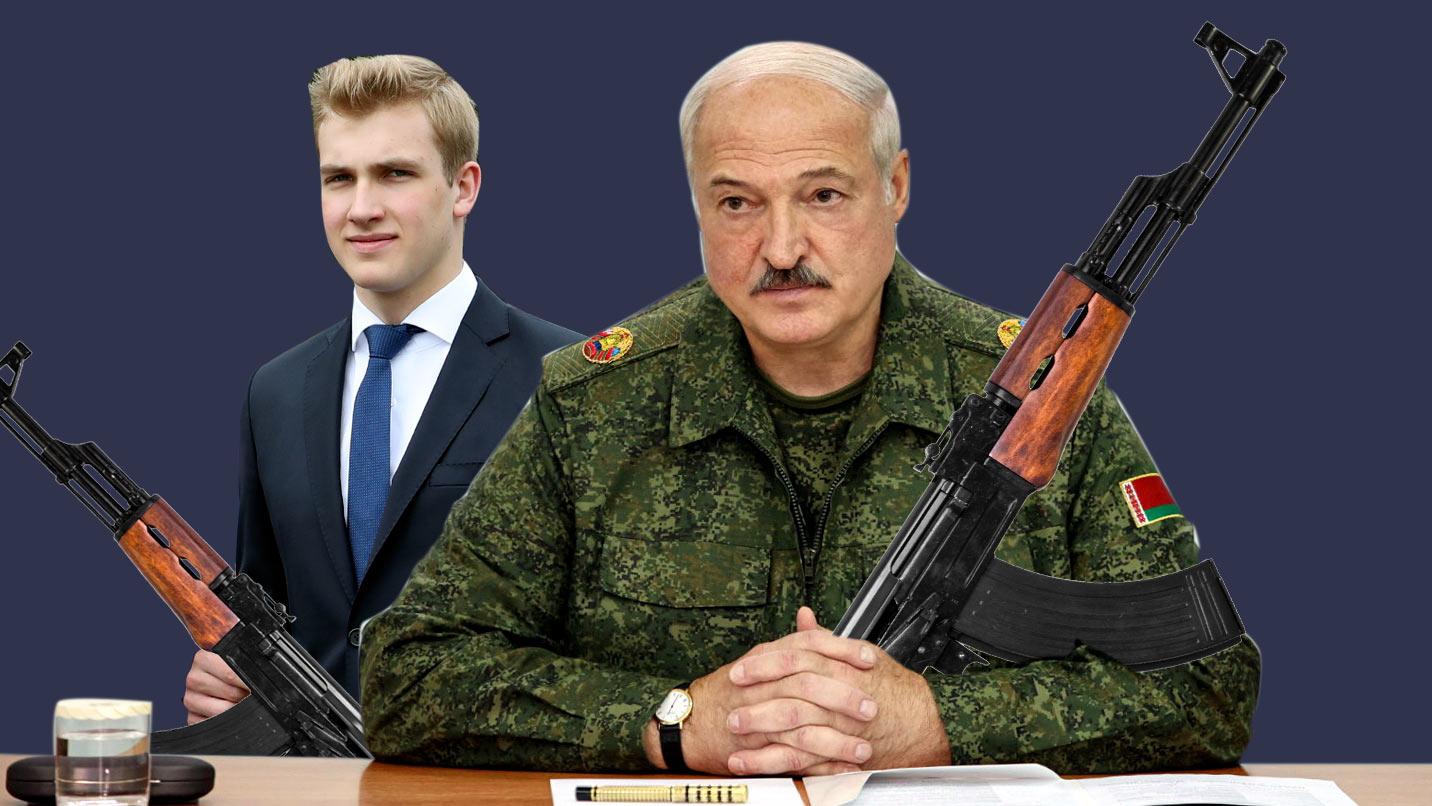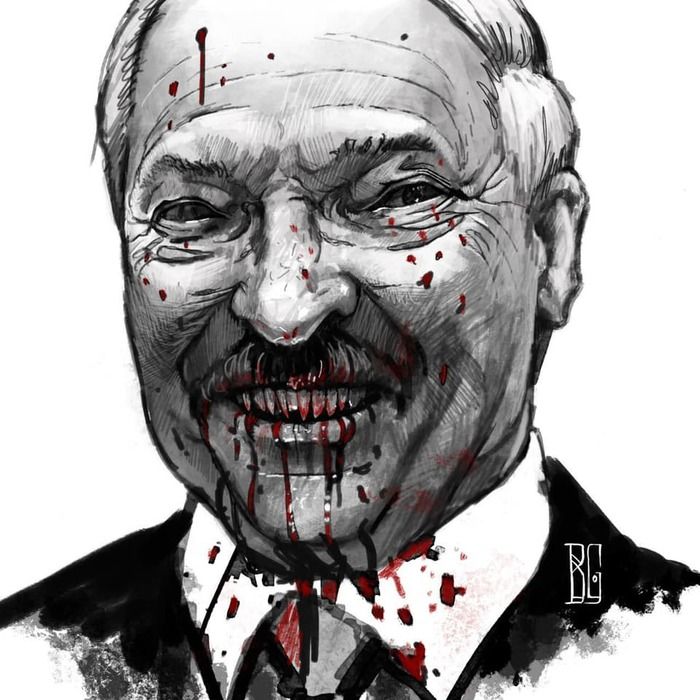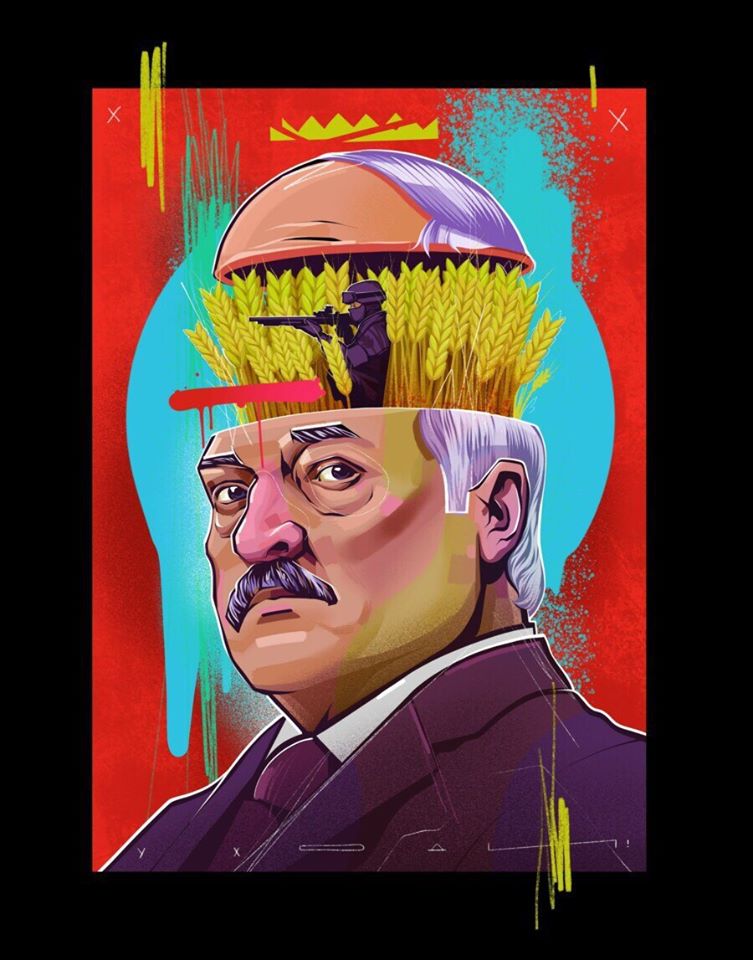As soon as we posted the “Lukashenka is turning Belarus into another Donbas republic” article, Lukashenka decided to reaffirm its main conclusion. He sent the army into the streets of the Belarusian capital. It was illegal: the law only allows to use army to guard strategic locations during martial law, and there was no martial law. For the first time since World War II the streets of Minsk were blocked by barbed wire.
This decision wasn’t rationalized in any way. Instead, it was preceded by a hysterical – literally, written in all-caps and all – statement from the minister of defence. It said – to be precise yelled foaming at the mouth – that the army cannot allow a “desecration of holy sites.”
The minister of defence has threatened to attack the incredibly peaceful protesters over a theoretical possibility of vandalism that nobody was calling for nor planning for. He just went and labeled them “fascists.” Not because they did or said anything even remotely associated with fascism. Merely because the protests predominantly use the national symbols that used to be official from 1991 to 1995 and to which Lukashenka himself swore his oath of allegiance in 1994. The same symbols that Belarus used when celebrated 50th anniversary of defeating Nazi Germany. Over the course of the last five years these symbols were gradually returning into public spaces, and the government has allowed it when it was useful as leverage against Putin.
When Hitler saw that his blitzkrieg has failed, he tried to exploit the national feelings of the peoples of the USSR republics who considered the Soviet regime an occupation, and has set up puppet governments in the occupied territories that used national symbols. That doesn’t make them Nazi symbols. The collaborationist government in France used national symbols, too, same thing happened in other countries in Europe, and nobody was expected to abandon their national symbols because of that. The current official flag of Russia was used by the Russian Liberation Army: the largest of the military divisions formed by people of USSR that served under Nazi command.That didn’t prevent the Russian tri-color from showing up at the meetings in support of Lukashenka. Somehow that doesn’t make the minister of defence start another temper tantrum. He also has no problem with Lukashenka calling the Germany under Hitler a “model presidential republic,” nor with other telltale signs of fascism in the Lukashenka regime.
How else can one convince an army to shoot at people in a country without a national divide, without extremist groups, where protesters take off their shoes before standing on a bench? Only by using the old Goebbels method and calling one’s opponents “fascists.” Same method that Russian propaganda used to support the annexation of Crimea and the invasion into Donbas: they declared that all Ukrainians are “fascists.” DNR and LNR now use this label exclusively.
Thankfully, this time the army didn’t shoot. The military exercise only got as far as the laughable dogfight with balloons on Lithuanian border. Judging by the photos, the conscripts were uncomfortable behind their barbed wire, some definitely appeared to feel out of place. And yet, the whole thing looked as if the entire country is engulfed by an undeclared war.
Lukashenka himself completed the picture. His press office has published photos and videos of him running an emergency meeting accompanied only by his 15 years old son in body armor and armed with a Kalashnikov. He and his son were also flying over Minsk in a helicopter, with Lukashenka saying things like “where are they now, ran off like rats.” Next video was of them landing next to the Independence Palace, with the teenager in full battle gear and Lukashenka playing Pablo Escobar: also with a rifle in his hand, surrounded by men with shaved heads wearing civilian trainers like the gangsters from 1990-s. After the protesters left, the entire entourage went to talk to the soldiers. Lukashenka called them “beautiful,” gave them thumbs up, and promised to “take care of them.” Them being the protesters, who were there moments ago with balloons, flowers, music, singing, and a multitude of creative posters.
It looked like the final days of Gaddafi or Hussein, or the Donbas puppet governments in Ukraine. Except completely absurd, considering the completely peaceful protests in the background.
It should be obvious that you can’t have a dialogue with someone who arms his teenage son with an assault rifle against the balloons. At least not without a mediation by a psychiatrist or an investigator.
Let me repeat once again: this is not some national quirk. This is not a part of our political culture. This isn’t any less wild than if it happened somewhere like Finland. Most Belarusians believe that Lukashenka’s actions are delusional and dangerous. And threatening to start another round of brutal violence against Belarusians. The only way to prevent that is to decisively isolate the madman.
Dzmitry Halko, Susviet.World



